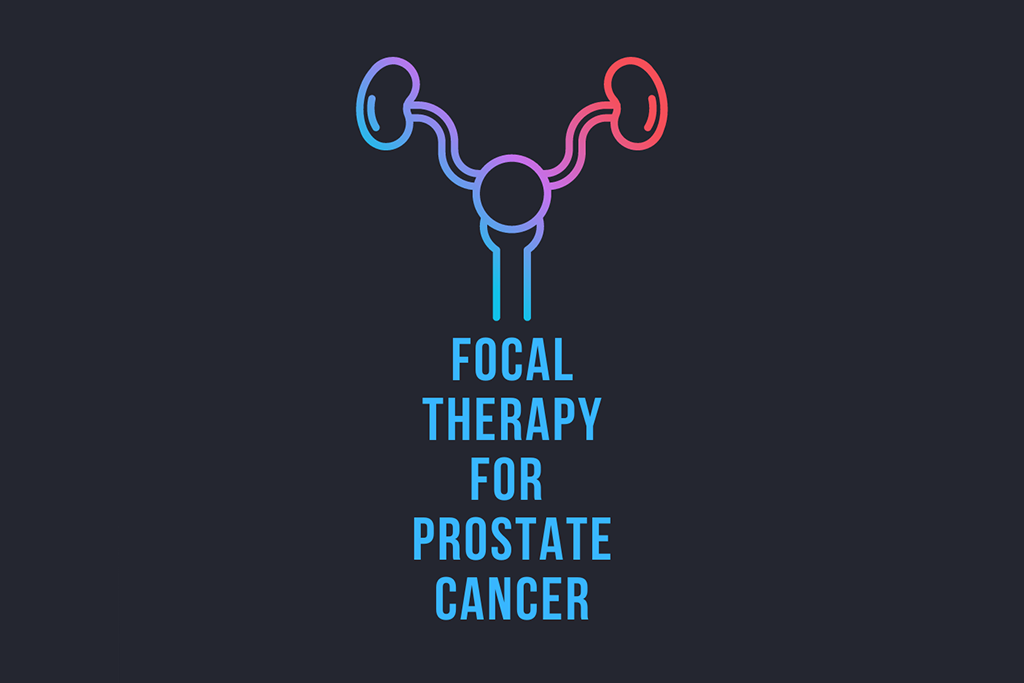It is often devastating for men when they find out that they have prostate cancer. When the cancer is localised within the prostate (i.e., ‘no spread’ of cancer outside the prostate), urologists will usually recommend either surgery to remove the prostate (radical prostatectomy) or radiotherapy treatment of the prostate. For select men with the slow-growing (low grade) type of localised prostate cancer, they can be offered close observation (active surveillance) instead of treatment.
Issues with whole gland treatment
Surgery or radiotherapy, which are also known as whole gland treatment as the entire prostate is removed or irradiated, can potentially result in urine incontinence and erectile dysfunction in some patients. The reason is that the nerves, blood vessels, and muscles that determine urine control and erection are in close proximity to the prostate gland, and are thus often damaged in whole gland treatments.
What is focal therapy?
With the advent of more accurate MRI-targeted prostate biopsies in the last few years, some patients are diagnosed with cancer only involving a small proportion of the prostate. In these men, the logical thought is whether treatment can be focused only on these areas of cancer without needing whole gland treatment. This is also known as focal therapy as only the focus of cancer is treated. This approach can potentially improve the functional outcomes of treatment (i.e., lower the risk of urine incontinence and erectile dysfunction) without sacrificing control of the cancer that is achieved with whole gland treatment.
There are many energy sources that have been used for focal therapy, but the two most common types reported in studies are High-Intensity Focused Ultrasound (HIFU) and cryotherapy. In HIFU, heat is generated by an ultrasound probe placed in the rectum and directed towards the region with prostate cancer, resulting in death of the cancer cells. For cryotherapy, probes are placed through the perineal skin into the area of prostate cancer, resulting in freezing and death of the cancer cells. Depending on the number, size and location of the prostate cancer, different portions of the prostate can be targeted in focal therapy (see figure below).
How effective is focal therapy?
Unfortunately, there is a lack of long-term data on the effectiveness of focal therapy in treating prostate cancer, with almost all studies following up with patients for less than 10 years after treatment. Most of these studies find that approximately 20-30% of prostate cancer can persist or recur after focal therapy. These areas of cancer may then either require repeat focal therapy or whole gland treatment. There is some concern that whole gland treatment after failure of focal therapy may be more complicated and lead to worse functional outcomes compared to undergoing whole gland treatment right from the start. In terms of functional outcomes after focal therapy, studies have confirmed excellent outcomes, with continence rates of over 97% and preserved erection function in more than 75% of patients. Finally, it is important to note that none of the studies on focal therapy have directly compared it to the traditional whole gland treatments.
Which patient can potentially be a candidate for focal therapy?
Focal therapy is currently still not considered standard of care for treating prostate cancer in international guidelines. It is recommended that focal therapy be done as part of a clinical study so that the data of these patients can be tracked and analysed to provide more evidence of the effectiveness of focal therapy. At the moment, based on expert consensus, the ideal patient for focal therapy is someone with a small area of Gleason grade group 2 cancer who has undergone an accurate MRI-targeted and systematic biopsy to exclude aggressive cancer outside the proposed area for focal therapy.

Picture credit: Lebastchi AH, George AK, Polascik TJ, et al. Standardized Nomenclature and Surveillance Methodologies After Focal Therapy and Partial Gland Ablation for Localized Prostate Cancer: An International Multidisciplinary Consensus. Eur Urol. 2020;78(3):371-378.














